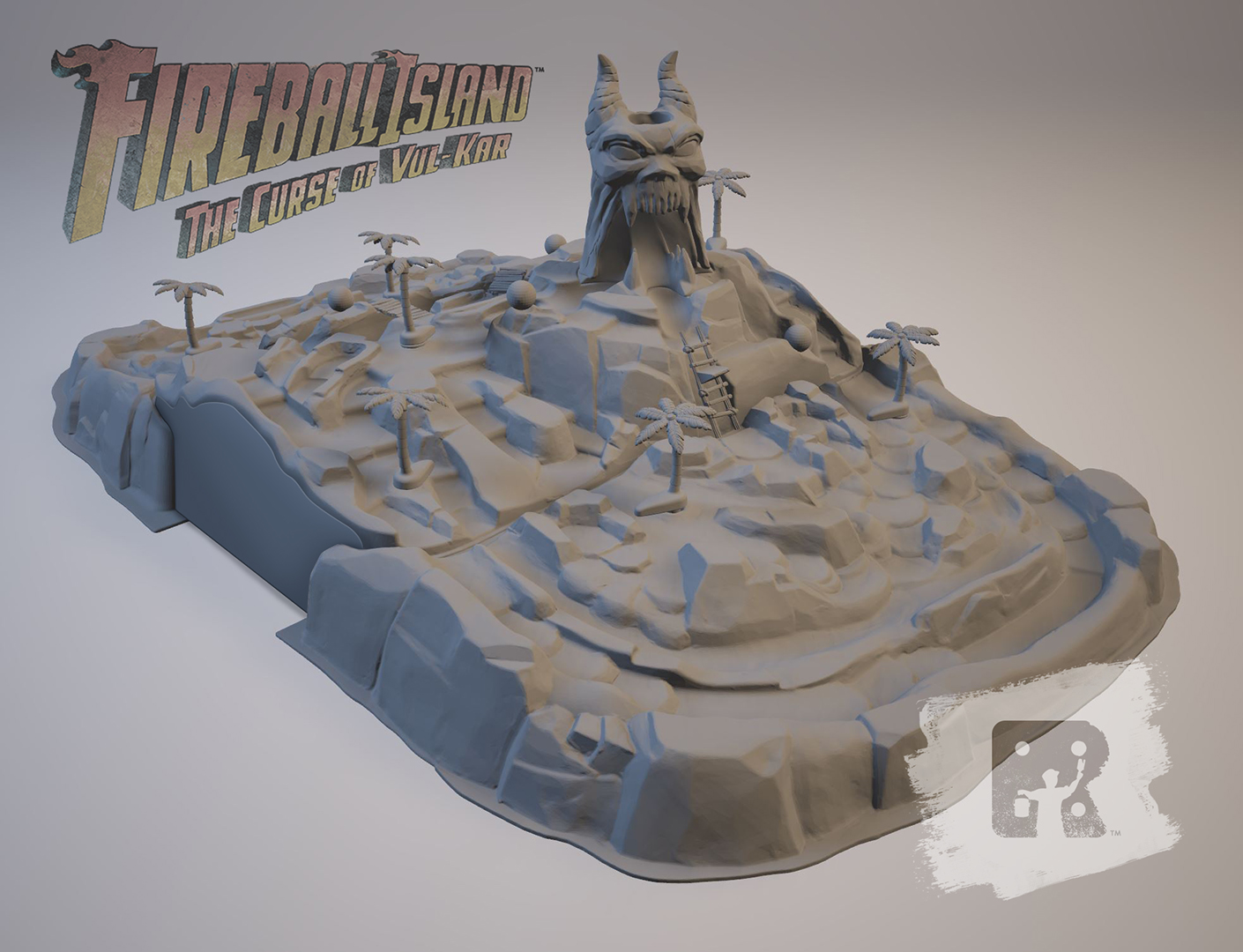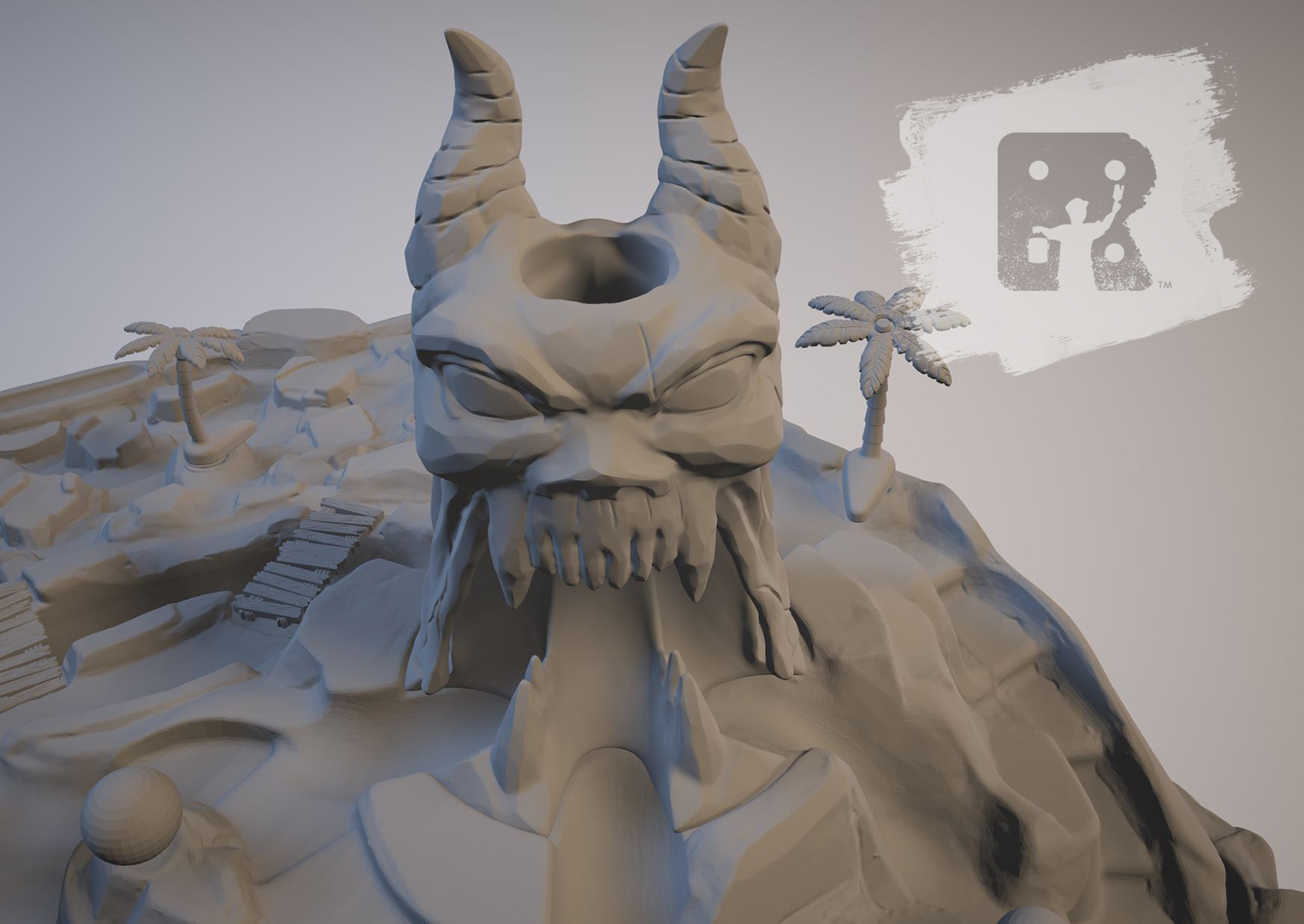Fireball Island Design Diary 1
When we finally acquired the license to bring back Fireball Island – after a round of cheering – the full measure of the task before us finally sunk in. This was, by far, the most requested game for us to bring back. People have such fond memories of the game. But nostalgia is a hell of a drug. People remember the game as larger than life. Vul-Kar towering in the air. Marbles careening down the chutes at the speed of sound. Pawns slipping the surly bonds of earth and reaching low-altitude orbit. As Rob put it: We can’t just make Fireball Island better than it was. We need to make it better than people remember it.
But if you’ve ever heard an 80’s kid when they talk about Fireball Island, it’s all:

When we looked at the game in the cold light of day to start the restoration process, we realized the magnitude of the work in front of us. The marbles didn’t move quite as fast as we remembered. And that box? You could pack it as a suitcase for a two-week cruise. Game stores would need to lease additional space just to carry the thing. But the biggest thing was the flow of play. The game played great for kids. Roll a die; move your guy. Roll a one; have some fun. But, in reality, you had little control over your pawn. There weren’t many choices to make. And the marbles were too predictable. When you let one go, you knew exactly where it was going to end up. Those kids are now adults, and games have gotten a lot better too in the meantime. What to do?
Rob immediately seized on our design restoration approach: Give people more control over their pawns and less control over the marbles. In this Design Diary, I want to show you the design process behind the island and show off some images of what you can expect. (Keep in mind, these are 3D renderings of the design work in progress and not the final images.)
To meet these goals, we knew we would need to rebuild the island from the ground up. It would not be enough to simply redesign the pathways. For starters, you wouldn’t have enough room on the existing layout to carve new paths. We also knew we needed to get the marbles moving faster, and simple physics gave us our answer there. So, how do we make the island bigger, taller, and more chaotic? And, oh yeah, fit it in a smaller box?
Credit for the idea that led to the solution goes to our Restoration Guru, Mike Gray. At an early design session, he scribbled a little sketch of three separate trays. By splitting the island up into three pieces, we can stack them pyramid-style for play and nest them like Russian dolls for putting away. This gives us the best of both worlds. It increases the overall footprint of the island and greatly raises the height, which, in turn, gives us more marble velocity, all while fitting in a box roughly the size of Twilight Imperium.

Enjoy your stay!
Once we had the basic structure of the island down, we had to look at the pathways. We wanted to provide more paths for both the players and the marbles to increase variety. We also wanted to vary the types of paths. Now there are split paths. So you can play the percentages, but you’re never certain which particular path a marble will take. Some areas aren’t paths at all, but rough terrain that sends the marbles down Plinko-style. And some areas include other marbles, precariously balanced, ready to cascade if bumped just so.
That was a nice start, but we wanted even more variation. So we came up with this idea for trees. These pieces slot into the island and have a little flipper that juts out into the path. By rotating the trees, players can have some control over which way a marble will roll, trying to guide it away from themselves or, better yet, toward one of their opponents. All while adding a great 3D look to the surface of the island.

A happy little tree.
Great. But we still weren’t satisfied. We kept looking for ways to add uncertainty. Then, we came up with an idea that just blew everyone away: What if Vul-Kar himself were devilishly sly about where he sent those fireballs flying? The team devised a design for Vul-Kar’s interior piece that splits the chute into three directions as it leaves his mouth. His imposing lower canines provide perfect dividers. Now there are three potential exit points for each marble that Vul-Kar spits out. There are five different paths that begin at the top of the island. You can turn Vul-Kar so he faces any particular set of three paths. When you drop a marble in, it will go down one of these three possibilities. But we didn’t want to leave the marbles to pure chance. The team spent weeks tweaking this interior design so the marbles most often exit the center path, while occasionally spitting out one of the side paths. While players can never be certain which path a marble will take, they can certainly “play the percentages”.

Is it just us, or does he look angrier than usual?
All of these variables add up to an exciting experience, with players at the edge of their seats, watching the marble pick its path. Will it be a narrow escape or certain doom? With all of that chaos engineered into the game, we knew we had to give players an equally potent arsenal to affect the outcome. So we ditched the pure roll-and-move and added some action cards. But you’ll have to wait to see how that all works for the next installment.
The Kickstarter for Fireball Island: The Curse of Vul-Kar launches on April 3rd. Please follow us on Kickstarter and sign up for our mailing list on the front page of our site. The second part of this design diary will post next week.
